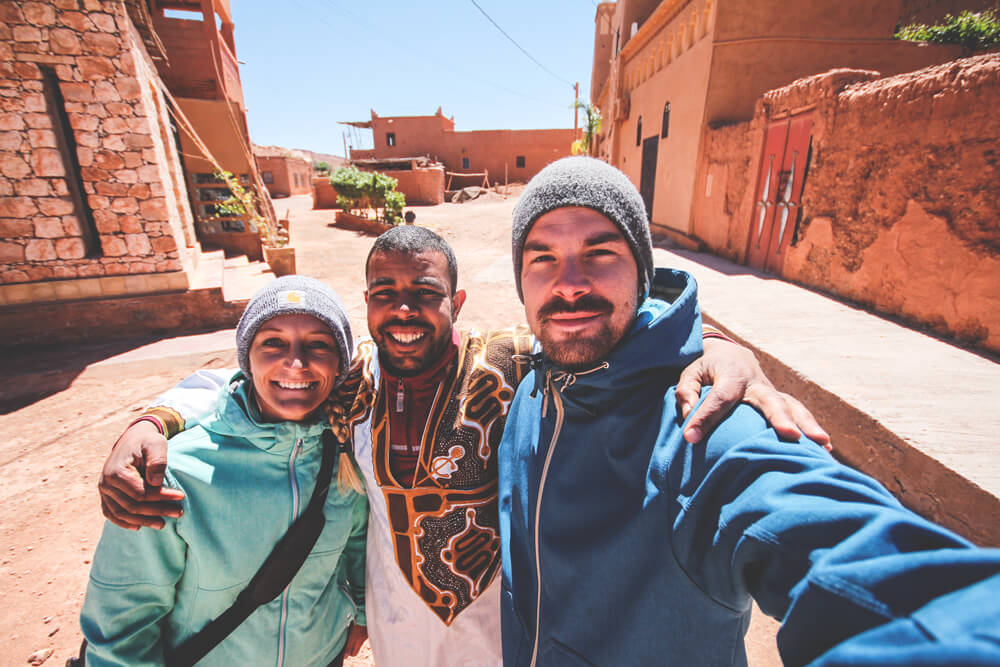Our Morocco tour could finally begin. After three nights in our Riad Alwachma in Marrakech, our tour through the “Great South” of the country began toward Tamdaght. We were so excited to see what the next few days would bring and the diverse landscapes we would see. So we set off.
You should also know:
- Safety in Morocco
- Sights in the country
- Best time to travel to Morocco
- Entry & Morocco Visa
- Our Morocco Route
- The most beautiful riads
- Important travel insurance
- Our complete photo equipment
- The best travel credit cards
- Morocco Round Trip & Tips
- You should also know:
- The journey across the High Atlas
- Picturesque valleys and green oases
- Beautiful Kasbah Ellouze in Tamdaght
- A tour of the town of Tamdaght
The journey across the High Atlas
We picked up our little car at the Europcar station in Marrakech, packed our things in the trunk, and drove off. Our destination was the small town of Tamdaght. The MAPS.me app, which we had installed on our tablet, showed us 190 kilometers and just under 3.5 hours of driving time. That didn’t sound so bad, we thought.
However, it took us almost an hour to even get out of Marrakech. People kept walking through the streets, a market here, a market there. You have to be very careful if you have your own rental car and are traveling in the cities. Donkeys, camels, cows, or goats often cross the road, so caution is advised.
After almost two hours, we got closer and closer to the High Atlas. This high mountain range in northwest Africa stretches almost 2,300 kilometers across Morocco, Algeria, and Tunisia. The highest peak, at almost 4,160 meters, is located in the south of Morocco. The Atlas forms a kind of border between the relatively humid climate in the north and the extremely dry Sahara.
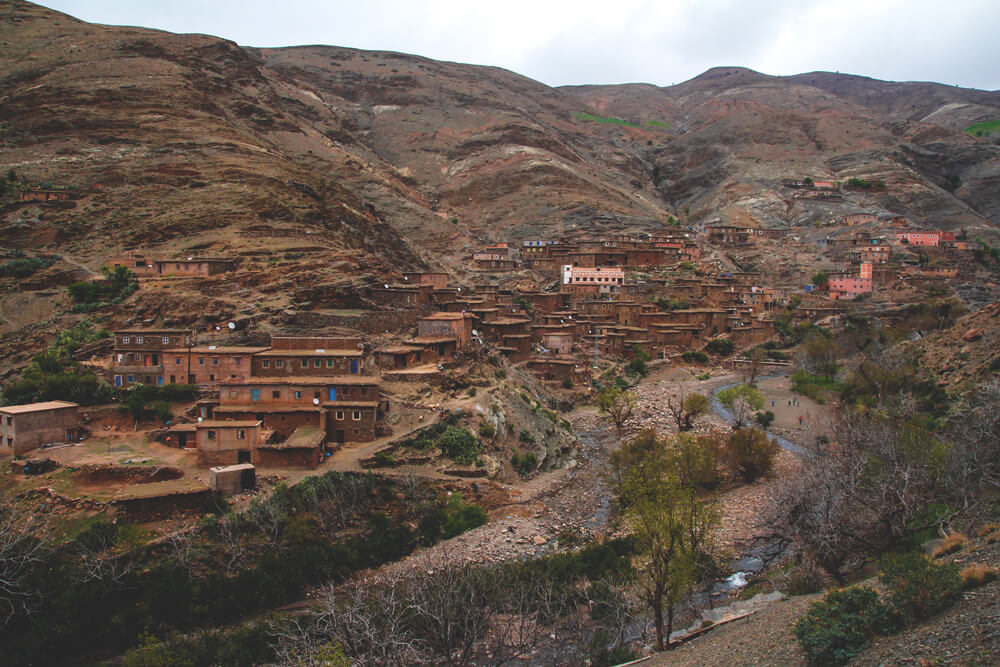
The weather wasn’t on our side that day; the higher we climbed, the windier, rainier, and colder it became. The clouds hung low, visibility was very limited. The roads became increasingly winding, the rocky hills ever higher. In the narrow valleys, we saw inconspicuous villages nestled among small fields. We wound our way along the narrow roads, stopping several times to enjoy the view (despite the bitter cold). We didn’t encounter much oncoming traffic, except for the occasional long-distance bus or tour bus.
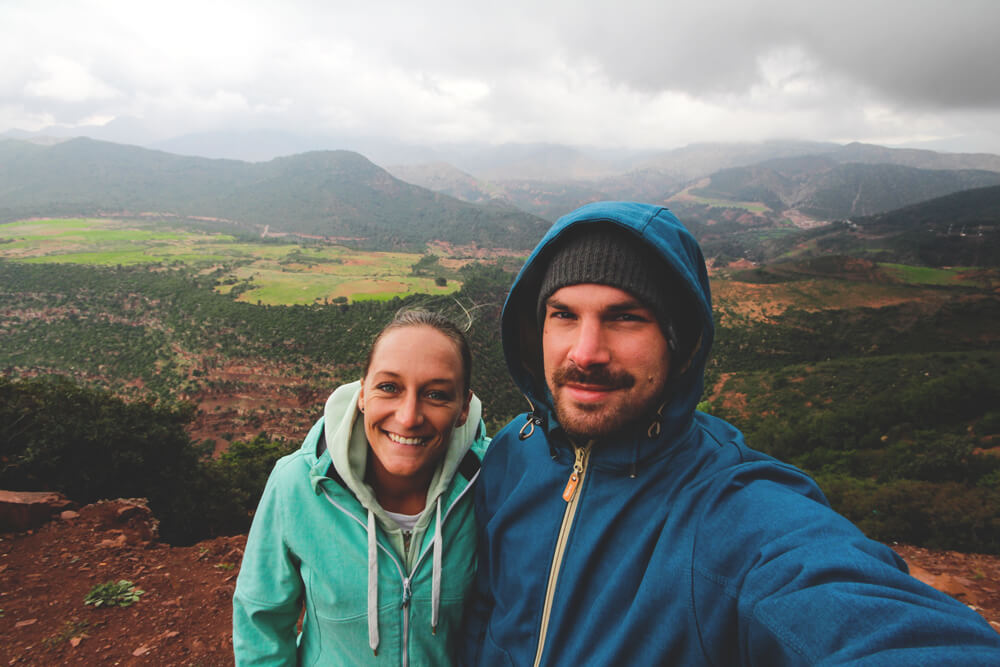
Picturesque Valleys and Green Oases
With every kilometer driven, the mountain valley opened up more and more. Eventually, the green landscape in the mountains became a reddish-brown landscape with picturesque valleys and green river oases. One pristine village followed another. The houses are built of clay, and fortifications are called “kasbahs.” These fortifications were once built by rulers to control the hinterland and are arguably the most unique dwellings in North Africa. So much tradition is embedded in the walls of the kasbahs; each one tells its own unique story.
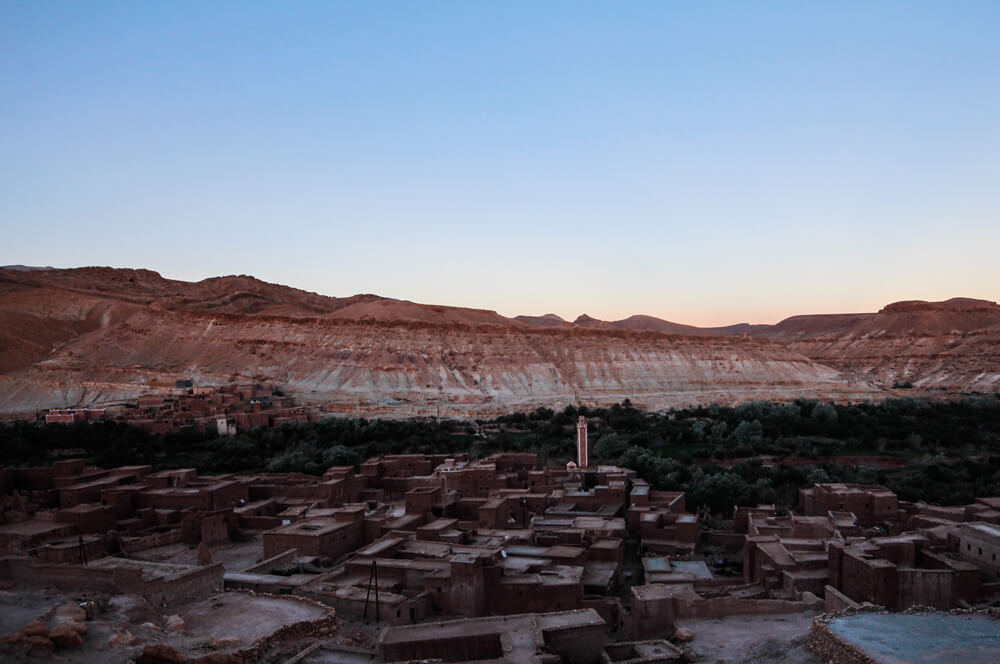
The weather improved the closer we got to our destination for the day. The clouds gradually cleared, and we finally caught a few rays of sunshine. We then drove along a gravel track for a while, then returned to a paved road. We had just crossed the High Atlas Mountains to the 2260-meter-high Tizi n’ Tichka Pass. We then continued on a side road toward our accommodation.
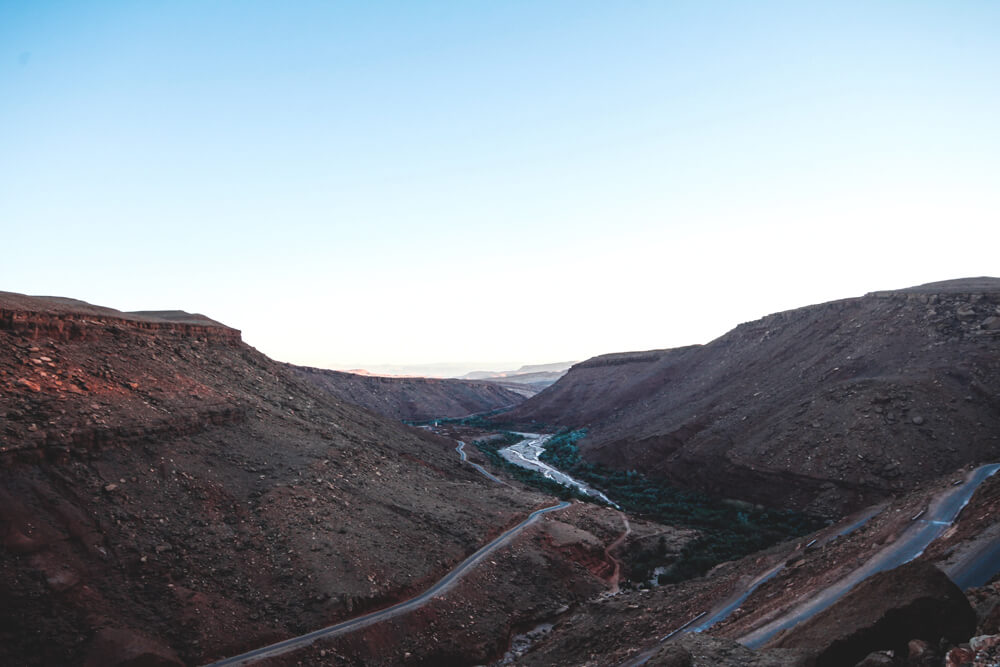
Beautiful Kasbah Ellouze in Tamdaght
After almost six hours (although the navigation system predicted only 3.5 hours), we reached the town of Tamdaght and our accommodation, Kasbah Ellouze. Next to it is the ancient Kasbah Tamdaght, once inhabited by the ruler Glaoudi. Kasbah Ellouze is a traditional adobe building with a beautiful courtyard and four towers. The entrance area also features a cozy lounge, the wonderful Jazz Room for breakfast and dinner, and several terraces with views of the mountains and the village.
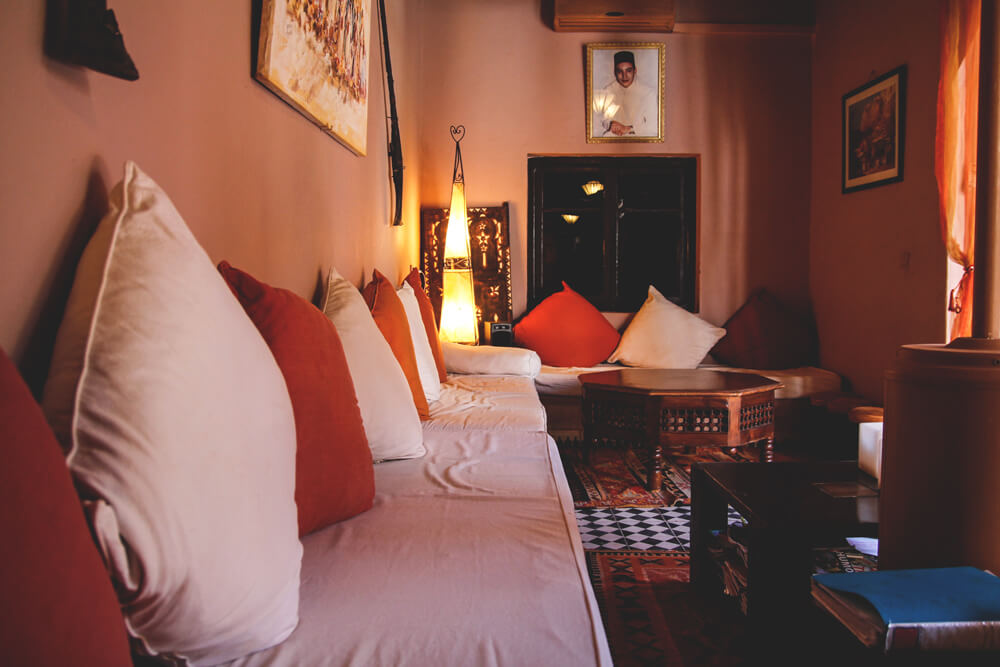
We were warmly welcomed by the French owners and staff. The cold wind whizzed around our ears, and now we just wanted to get warm. The rooms are on the upper floor; we stayed in a large family suite. As usual, we were offered fresh mint tea and a few cookies. This allowed us to finally thaw out and admire the sunset through our window. The scenery was dreamy, everything tinged with a soft orange hue. From our terrace, we overlooked the many castles, the green oases, and the mountain range.
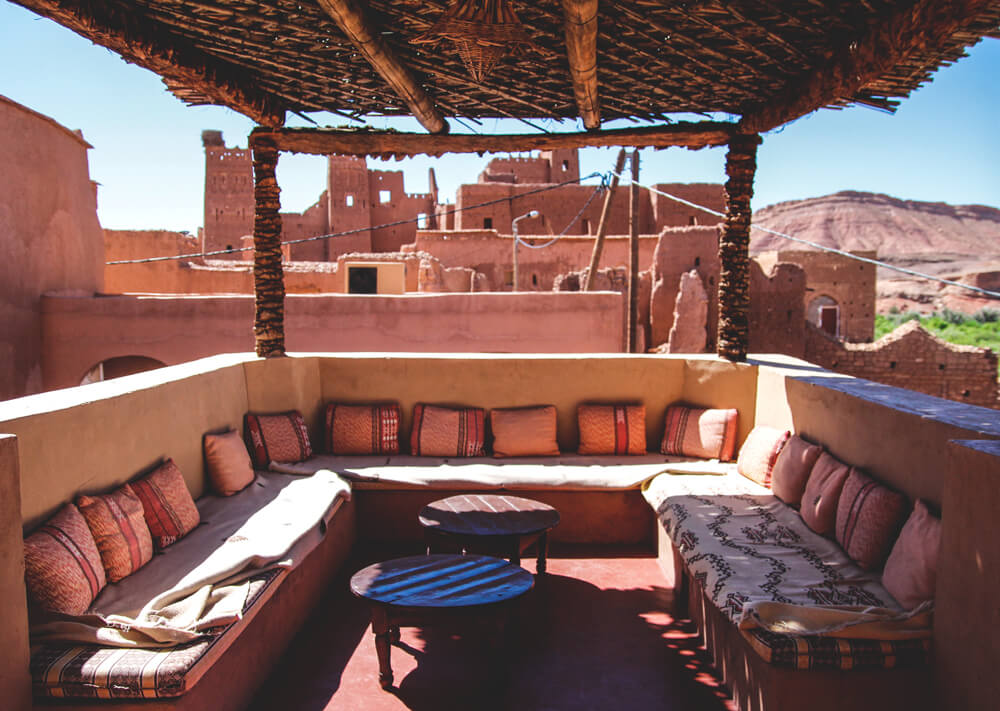
The room consisted of two bedrooms, a bathroom, and a kind of living room with a table, chairs, and a large closet for storing personal belongings. The courtyard even has a heated pool with sun loungers. You’ll find little oases everywhere to linger and relax. Since it was simply too cold and windy that evening, we went down to the lounge and sat directly under the patio heater. In the Jazz Room, we enjoyed a delicious dinner with a traditional tagine, soup, and dessert.
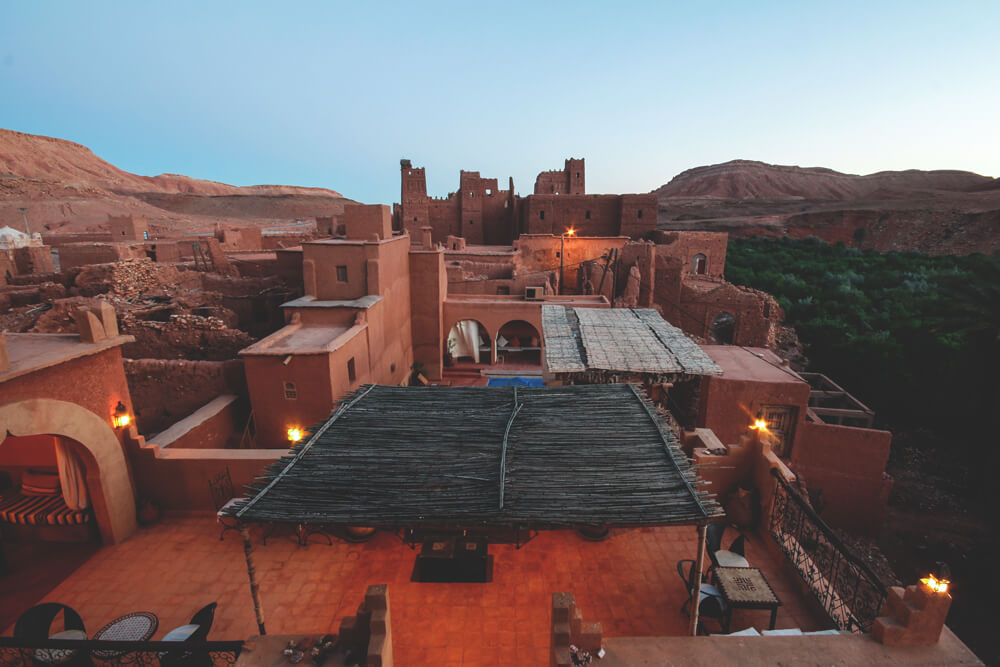
A tour of the village of Tamdaght
The night flew by. The next morning, a delicious breakfast awaited us. The sun was shining, the sky was a beautiful blue, and the cold wind had finally passed. The very friendly owner offered us a short tour of the village with her staff. Of course, we agreed immediately, wanting to learn more about the country before we had to drive on.
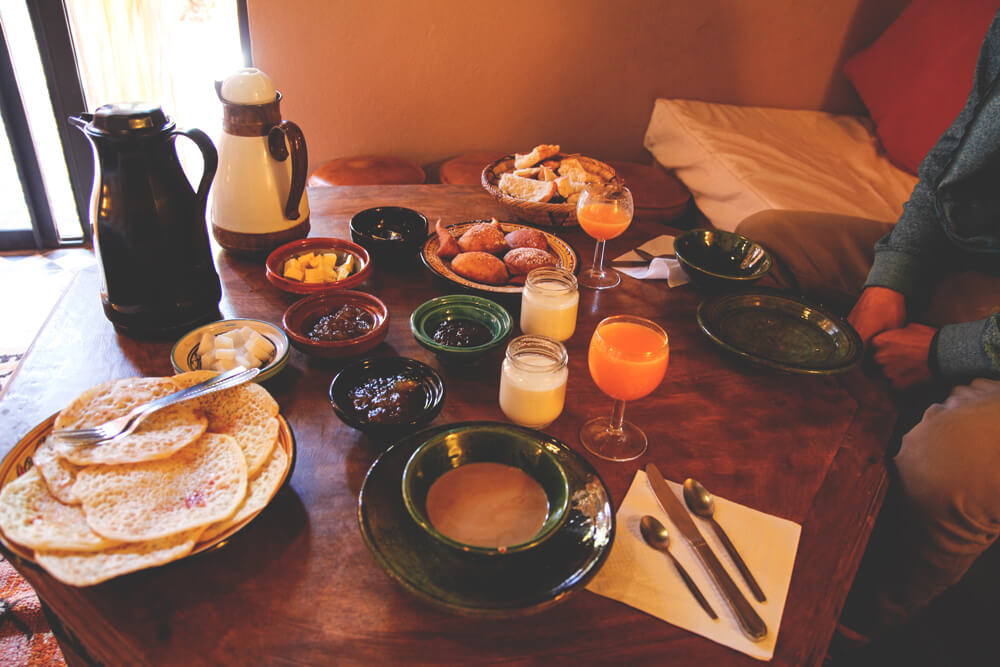
Directly behind the kasbah is a green garden with a variety of plants and cultivated food. We saw an almond tree for the first time in our lives The friendly staff member led us down to the river, showed us, and explained to us how the traditional mud houses are built. He drew a sketch in the sand to help us visualize the construction.
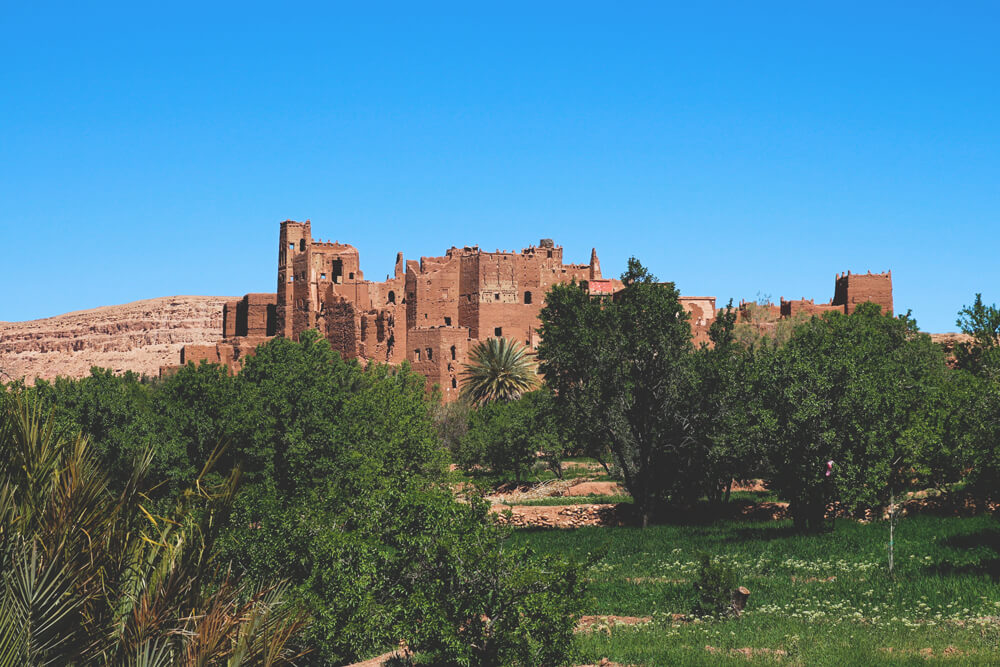
At the end, the employee (we unfortunately forgot his name) took us to the camels. He told us that they love coffee and enjoy the occasional cigarette. So the camel grabbed the coffee bottle and drank the contents in one go. After about 45 minutes, we arrived back at our kasbah. We thanked him for the private tour, gave a generous tip, and took a photo together “for the family album.”
Afterward, we packed up our things, said goodbye to the kasbah owners, and set off for our next stop. Ahead of us lay another 250 kilometers toward Tenehir and another 300 kilometers to the Sahara Desert.
